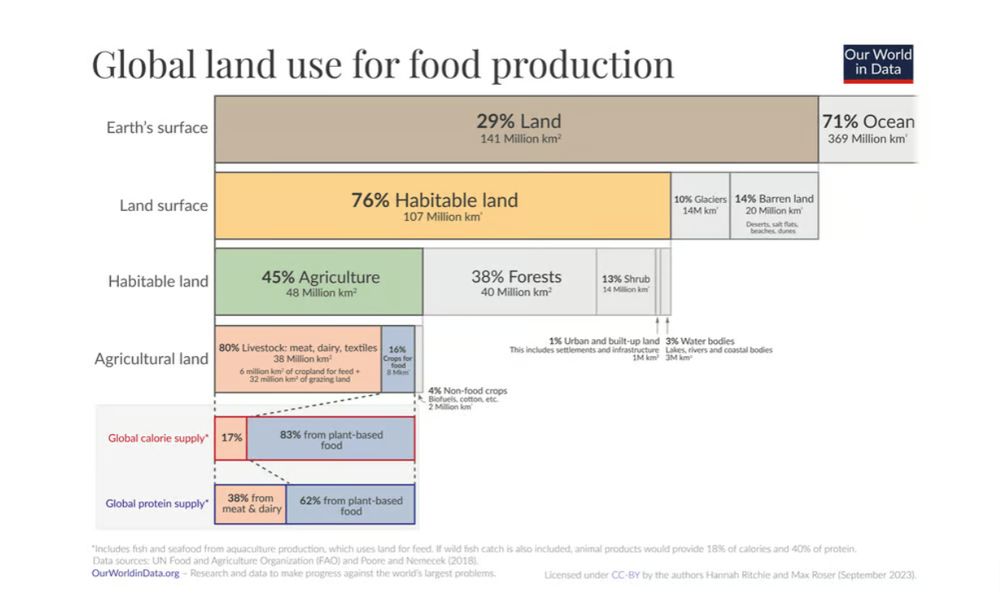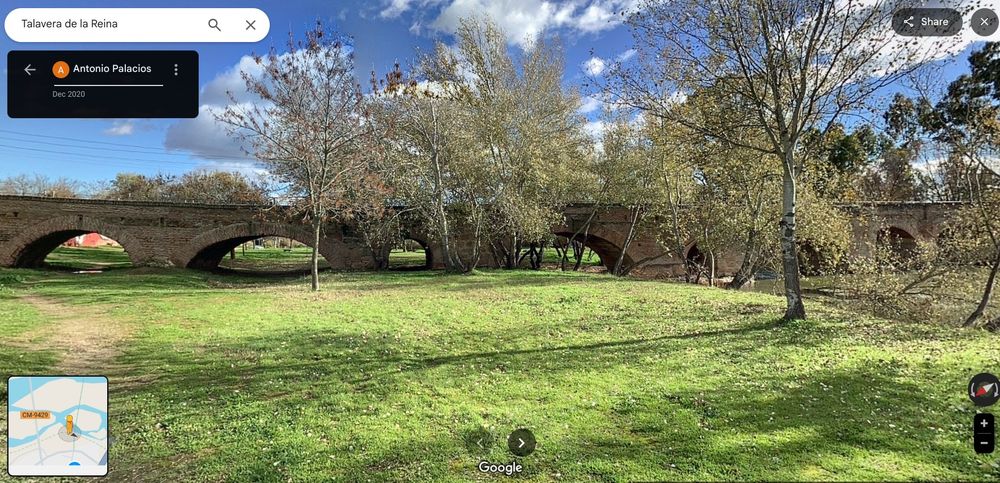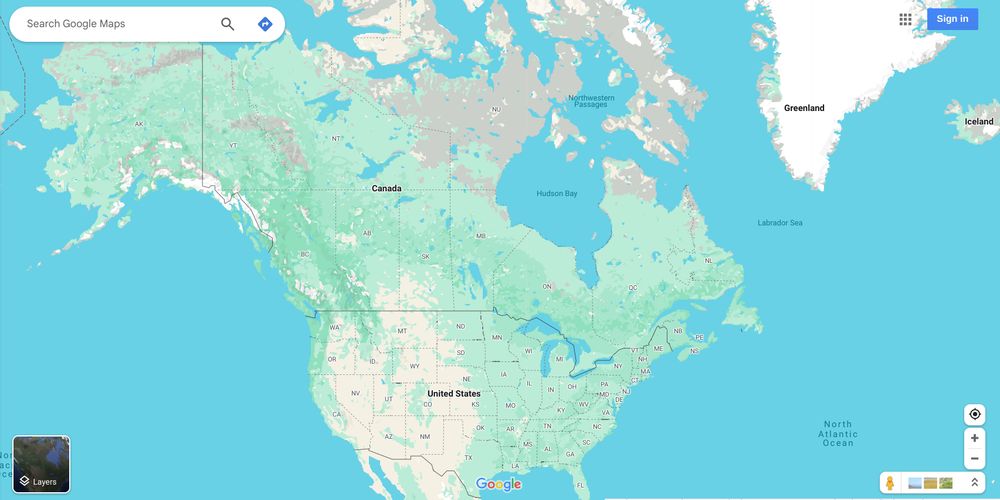
EcosystemEngineer
@ecosystemengineer.bsky.social
Sam Osborne
Advocating for all herbivores and megaherbivores, forest structures, vegetation structures, fast-track structural renovations, restoring ungulate migrations throughout all of Europe and beyond.
Advocating for all herbivores and megaherbivores, forest structures, vegetation structures, fast-track structural renovations, restoring ungulate migrations throughout all of Europe and beyond.

November 5, 2025 at 4:56 PM
I have die-back (left) and healthy vibrant pollarded (right) ash growing 30 metres away from each other.
I'm planning to pollard the die-back tree this year.
Pollarding reduces the resource load on the tree and its root system and it simulates heavy browsing by (now extinct) mega-herbivores.
1/2
I'm planning to pollard the die-back tree this year.
Pollarding reduces the resource load on the tree and its root system and it simulates heavy browsing by (now extinct) mega-herbivores.
1/2

July 16, 2025 at 1:51 PM
I have die-back (left) and healthy vibrant pollarded (right) ash growing 30 metres away from each other.
I'm planning to pollard the die-back tree this year.
Pollarding reduces the resource load on the tree and its root system and it simulates heavy browsing by (now extinct) mega-herbivores.
1/2
I'm planning to pollard the die-back tree this year.
Pollarding reduces the resource load on the tree and its root system and it simulates heavy browsing by (now extinct) mega-herbivores.
1/2
Let there be light.

July 15, 2025 at 4:40 PM
Let there be light.
On the edge of the Carpathians.
Is there any grazing in the mountain forests?
They look very similar to the empty ones here in Poland.
left pic Romania, right pic Poland
Is there any grazing in the mountain forests?
They look very similar to the empty ones here in Poland.
left pic Romania, right pic Poland


June 2, 2025 at 4:57 PM
On the edge of the Carpathians.
Is there any grazing in the mountain forests?
They look very similar to the empty ones here in Poland.
left pic Romania, right pic Poland
Is there any grazing in the mountain forests?
They look very similar to the empty ones here in Poland.
left pic Romania, right pic Poland
This might help you.
Hint, look at the top left hand corner.
Hint, look at the top left hand corner.

May 28, 2025 at 11:41 AM
This might help you.
Hint, look at the top left hand corner.
Hint, look at the top left hand corner.
I've seen and know all the popular narratives and I repeat, they're flawed.
@ourworldindata.org charts on global mammal biomass and land use prove this and while both are mostly used against livestock, this is because the data isn't being accurately evaluated.
Do we want group-think or science?
@ourworldindata.org charts on global mammal biomass and land use prove this and while both are mostly used against livestock, this is because the data isn't being accurately evaluated.
Do we want group-think or science?


April 18, 2025 at 6:12 PM
I've seen and know all the popular narratives and I repeat, they're flawed.
@ourworldindata.org charts on global mammal biomass and land use prove this and while both are mostly used against livestock, this is because the data isn't being accurately evaluated.
Do we want group-think or science?
@ourworldindata.org charts on global mammal biomass and land use prove this and while both are mostly used against livestock, this is because the data isn't being accurately evaluated.
Do we want group-think or science?
We can speed the whole restructuring process up with targeted cell-grazing & Elephant Pruning as a preparation for rewilding, or just improvements in forests or woodlands based on any mega-herbivore and even the very biggest.
en.wikipedia.org/wiki/Paracer...
en.wikipedia.org/wiki/Argenti...
en.wikipedia.org/wiki/Paracer...
en.wikipedia.org/wiki/Argenti...

April 14, 2025 at 4:06 PM
We can speed the whole restructuring process up with targeted cell-grazing & Elephant Pruning as a preparation for rewilding, or just improvements in forests or woodlands based on any mega-herbivore and even the very biggest.
en.wikipedia.org/wiki/Paracer...
en.wikipedia.org/wiki/Argenti...
en.wikipedia.org/wiki/Paracer...
en.wikipedia.org/wiki/Argenti...
Cell-grazing makes it very easy, I've had sheep through my garden several times and in all seasons.
They're great in the woodlands too.
They're great in the woodlands too.


April 8, 2025 at 12:44 PM
Cell-grazing makes it very easy, I've had sheep through my garden several times and in all seasons.
They're great in the woodlands too.
They're great in the woodlands too.
Tree foliage as an uneaten food resource illustrates the condition of our highly distorted and fragmented food-web.
Map reference 5°04'18.6"S 61°40'22.1"W
Map reference 5°04'18.6"S 61°40'22.1"W


April 5, 2025 at 8:02 AM
Tree foliage as an uneaten food resource illustrates the condition of our highly distorted and fragmented food-web.
Map reference 5°04'18.6"S 61°40'22.1"W
Map reference 5°04'18.6"S 61°40'22.1"W
I've just been looking at it on streetview.
It looks like some parts of it on the flood plain might be silted up from past floods. The arches look like they go a lot deeper and this would reduce the flow capacity.
If the water gets too high it can create lift that will affect the weak parts.
It looks like some parts of it on the flood plain might be silted up from past floods. The arches look like they go a lot deeper and this would reduce the flow capacity.
If the water gets too high it can create lift that will affect the weak parts.


March 23, 2025 at 6:06 PM
I've just been looking at it on streetview.
It looks like some parts of it on the flood plain might be silted up from past floods. The arches look like they go a lot deeper and this would reduce the flow capacity.
If the water gets too high it can create lift that will affect the weak parts.
It looks like some parts of it on the flood plain might be silted up from past floods. The arches look like they go a lot deeper and this would reduce the flow capacity.
If the water gets too high it can create lift that will affect the weak parts.
No evidence of any herbivore activity here and with the only navigable routes through the "protected forest" being roads, which hampers access to water, it's unlikely there'll be any in the future.
Not great for elephants or gaur, so no wonder their numbers are dwindling.
It needs opening up.
Not great for elephants or gaur, so no wonder their numbers are dwindling.
It needs opening up.



March 21, 2025 at 6:36 AM
No evidence of any herbivore activity here and with the only navigable routes through the "protected forest" being roads, which hampers access to water, it's unlikely there'll be any in the future.
Not great for elephants or gaur, so no wonder their numbers are dwindling.
It needs opening up.
Not great for elephants or gaur, so no wonder their numbers are dwindling.
It needs opening up.
Most of the world's herbivores are now in the livestock sector, occupying 32 million km2 of land.
This, plus all the rest i.e. all 107 m-km2 of habitable land supports just 2% of total wild mammal biomass, and of that 2% some will be predators.
1/4
This, plus all the rest i.e. all 107 m-km2 of habitable land supports just 2% of total wild mammal biomass, and of that 2% some will be predators.
1/4


March 19, 2025 at 2:26 PM
Most of the world's herbivores are now in the livestock sector, occupying 32 million km2 of land.
This, plus all the rest i.e. all 107 m-km2 of habitable land supports just 2% of total wild mammal biomass, and of that 2% some will be predators.
1/4
This, plus all the rest i.e. all 107 m-km2 of habitable land supports just 2% of total wild mammal biomass, and of that 2% some will be predators.
1/4
A map showing all the mega-herbivores and their migrations in South America 2025

March 16, 2025 at 12:53 PM
A map showing all the mega-herbivores and their migrations in South America 2025
A map showing all the mega-herbivores and their migrations in North America 2025

March 16, 2025 at 12:53 PM
A map showing all the mega-herbivores and their migrations in North America 2025
A map showing all the mega-herbivores and their migrations in Europe 2025

March 16, 2025 at 12:53 PM
A map showing all the mega-herbivores and their migrations in Europe 2025
The Amazon is just like many other forests, i.e. minus its historic herbivores and mega-herbivores.
The changes in structure take time, but the end result is a very unappealling habitat for most species.
Pic from the article, what on earth can live in that mess?
Empty forest syndrome is worldwide.
The changes in structure take time, but the end result is a very unappealling habitat for most species.
Pic from the article, what on earth can live in that mess?
Empty forest syndrome is worldwide.

March 14, 2025 at 6:40 AM
The Amazon is just like many other forests, i.e. minus its historic herbivores and mega-herbivores.
The changes in structure take time, but the end result is a very unappealling habitat for most species.
Pic from the article, what on earth can live in that mess?
Empty forest syndrome is worldwide.
The changes in structure take time, but the end result is a very unappealling habitat for most species.
Pic from the article, what on earth can live in that mess?
Empty forest syndrome is worldwide.
2. Do a plant and soil swap (if the law allows).
Dig up a clump with a variety of plants, together with plenty of soil. A new site might not have all the soil biology the plants prefer, so taking that with the plants allows them both to spread naturally.
Dig up a clump with a variety of plants, together with plenty of soil. A new site might not have all the soil biology the plants prefer, so taking that with the plants allows them both to spread naturally.


March 5, 2025 at 6:57 PM
2. Do a plant and soil swap (if the law allows).
Dig up a clump with a variety of plants, together with plenty of soil. A new site might not have all the soil biology the plants prefer, so taking that with the plants allows them both to spread naturally.
Dig up a clump with a variety of plants, together with plenty of soil. A new site might not have all the soil biology the plants prefer, so taking that with the plants allows them both to spread naturally.
See what's growing locally, in places that aren't mown or too disturbed.
There are several ways to get them on-site.
1. Take seeds and then broadcast them shortly before grazing, that way they'll get to the soil surface before the livestock graze and trample.
There are several ways to get them on-site.
1. Take seeds and then broadcast them shortly before grazing, that way they'll get to the soil surface before the livestock graze and trample.


March 5, 2025 at 6:57 PM
See what's growing locally, in places that aren't mown or too disturbed.
There are several ways to get them on-site.
1. Take seeds and then broadcast them shortly before grazing, that way they'll get to the soil surface before the livestock graze and trample.
There are several ways to get them on-site.
1. Take seeds and then broadcast them shortly before grazing, that way they'll get to the soil surface before the livestock graze and trample.
Not far away in the same city a street corner hosts another opportunity for periodic grazing, bringing all the extra wildlife that can ony respond after grazing and trampling have taken place.
Reuniting plants and herbivores in the heart of the city and perfect for the sheep from the farm charity
Reuniting plants and herbivores in the heart of the city and perfect for the sheep from the farm charity

March 3, 2025 at 4:12 PM
Not far away in the same city a street corner hosts another opportunity for periodic grazing, bringing all the extra wildlife that can ony respond after grazing and trampling have taken place.
Reuniting plants and herbivores in the heart of the city and perfect for the sheep from the farm charity
Reuniting plants and herbivores in the heart of the city and perfect for the sheep from the farm charity
With some city dwellers having never seen a real live herbivore, urban vegetation of all kinds is ripe for periodic supervised cell grazing.
This raised bed in Newcastle UK, could be growing native vegetation and there are miniture goats at the local city farm that could graze it.
1/2
This raised bed in Newcastle UK, could be growing native vegetation and there are miniture goats at the local city farm that could graze it.
1/2

March 3, 2025 at 4:12 PM
With some city dwellers having never seen a real live herbivore, urban vegetation of all kinds is ripe for periodic supervised cell grazing.
This raised bed in Newcastle UK, could be growing native vegetation and there are miniture goats at the local city farm that could graze it.
1/2
This raised bed in Newcastle UK, could be growing native vegetation and there are miniture goats at the local city farm that could graze it.
1/2
Not great quality but this Ural owl first appeared a couple of years ago, not long after carrying out structural work in the grasses and trees.
Pics today 24 Feb 2025 in Polish Carpathians
Pics today 24 Feb 2025 in Polish Carpathians


February 24, 2025 at 3:05 PM
Not great quality but this Ural owl first appeared a couple of years ago, not long after carrying out structural work in the grasses and trees.
Pics today 24 Feb 2025 in Polish Carpathians
Pics today 24 Feb 2025 in Polish Carpathians
I'm planning to run similar trials with saplings this year.
The tall thin sapling (e.g. just above the G in Google, below) has poor proportions as a stand-alone tree.
The plan is to pollard one at 5 or 6 feet and then remove it with a one foot cube of soil with a digger and relocate it locally.
The tall thin sapling (e.g. just above the G in Google, below) has poor proportions as a stand-alone tree.
The plan is to pollard one at 5 or 6 feet and then remove it with a one foot cube of soil with a digger and relocate it locally.

February 13, 2025 at 10:55 PM
I'm planning to run similar trials with saplings this year.
The tall thin sapling (e.g. just above the G in Google, below) has poor proportions as a stand-alone tree.
The plan is to pollard one at 5 or 6 feet and then remove it with a one foot cube of soil with a digger and relocate it locally.
The tall thin sapling (e.g. just above the G in Google, below) has poor proportions as a stand-alone tree.
The plan is to pollard one at 5 or 6 feet and then remove it with a one foot cube of soil with a digger and relocate it locally.
Yes, but it's not just turf.
Native vegetation should be close-by somewhere, such as road verges or on the edges of woodland and a cube of around 20 x 20 x 20 cm takes a few plants + ample soil and soil-life with no great disturbance to the roots.
Native vegetation should be close-by somewhere, such as road verges or on the edges of woodland and a cube of around 20 x 20 x 20 cm takes a few plants + ample soil and soil-life with no great disturbance to the roots.

February 13, 2025 at 10:55 PM
Yes, but it's not just turf.
Native vegetation should be close-by somewhere, such as road verges or on the edges of woodland and a cube of around 20 x 20 x 20 cm takes a few plants + ample soil and soil-life with no great disturbance to the roots.
Native vegetation should be close-by somewhere, such as road verges or on the edges of woodland and a cube of around 20 x 20 x 20 cm takes a few plants + ample soil and soil-life with no great disturbance to the roots.
A little inspiration might help to speed up the process.
Map ref 46°03'32.0"N 25°22'08.0"E is perfect wood pasture for a trial migration and the first elephants in a European river for over 10,000 years.
This would get everyone's attention.
Map ref 46°03'32.0"N 25°22'08.0"E is perfect wood pasture for a trial migration and the first elephants in a European river for over 10,000 years.
This would get everyone's attention.

January 29, 2025 at 6:22 PM
A little inspiration might help to speed up the process.
Map ref 46°03'32.0"N 25°22'08.0"E is perfect wood pasture for a trial migration and the first elephants in a European river for over 10,000 years.
This would get everyone's attention.
Map ref 46°03'32.0"N 25°22'08.0"E is perfect wood pasture for a trial migration and the first elephants in a European river for over 10,000 years.
This would get everyone's attention.
With AI we need to understand which definition of intelligence is the most accurate.

January 28, 2025 at 10:00 PM
With AI we need to understand which definition of intelligence is the most accurate.

